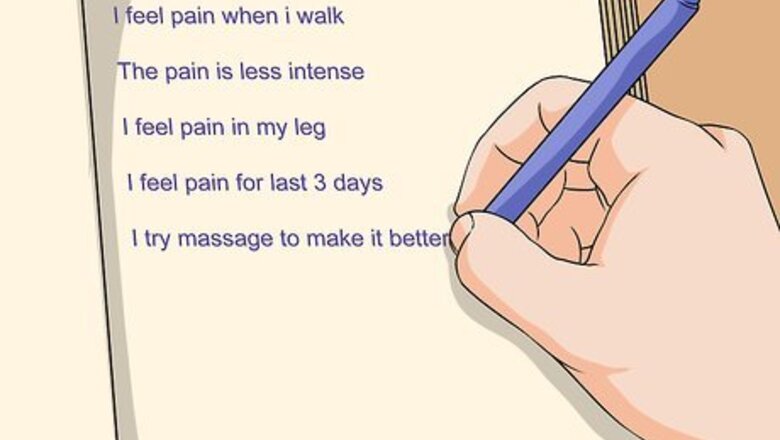
views
Getting Medical Attention
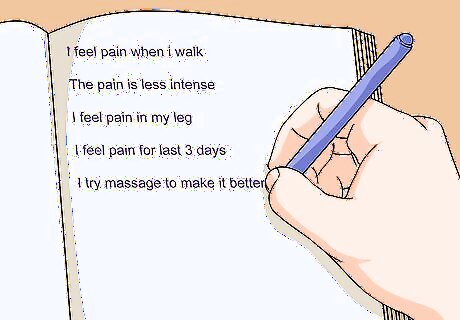
Keep a diary of your bone pain. Tracking when you experience bone pain, where you feel the pain, and when the pain comes can help you manage the pain or work with your doctor. You might find that a specific activity causes the bone pain or you may notice other symptoms that need to be treated. Write down: When the pain starts and what you were doing at the time. The severity and type of bone pain. Where you feel the pain. How long the pain lasts or whether it comes and goes. Things you try to make the pain go away.

Schedule an appointment with your doctor to discuss your bone pain. If the pain becomes severe or doesn't go away, get a medical exam and use this meeting to talk about your bone pain. Show your doctor the bone pain journal and go over your medical history. They may need to run tests to rule out or diagnose medical conditions that may be causing your pain. An X-ray is recommended for mid-shaft bone pain with no known injury. You may also require further evaluation to determine if the pain is in the bone or muscle. In rare cases, bone pain may be due to cancer, especially when it presents in young people. Your doctor may consider whether osteoporosis is the cause of midline spinal pain if you are at risk, such as being older. The pain may be due to compression of the vertebrae from degenerative bone disease. Tip: The doctor might order blood work, X-rays, magnetic resonance imaging (MRI), computed tomography (CT), or test the fluid in your joints before they make a diagnosis. If you're feeling anxious, ask your doctor to explain any of these tests and why they want to run them. Let your doctor know about any medications or supplements you're currently taking.
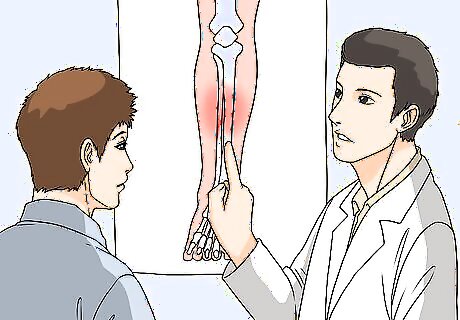
Treat underlying medical conditions to manage your bone pain. Once your doctor's made a diagnosis and knows what's causing your bone pain, discuss your treatment plan. If you'll be taking medication, learn about how to administer it, how often to take it, and what side effects to look for. Depending on your condition, treatment might include rest, surgery, chemotherapy, or oral medication.
Using Medication for Pain Relief
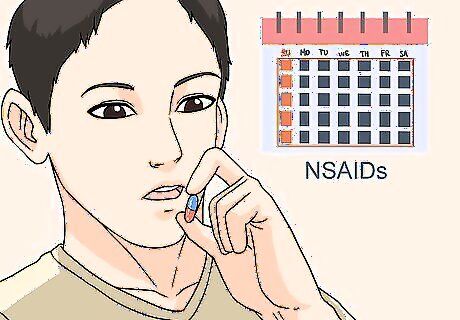
Take non-steroidal anti-inflammatory drugs (NSAIDs) for acute bone pain. Start with the mildest over-the-counter (OTC) pain relief if you have occasional bone pain. Buy aspirin or ibuprofen and follow the manufacturer's dosing instructions. Keep in mind that you can take NSAIDs for up to 5 weeks. If you're still feeling bone pain after this point, ask your doctor about stronger pain relief. You can also take acetaminophen for pain relief, but it doesn't have anti-inflammatory properties.
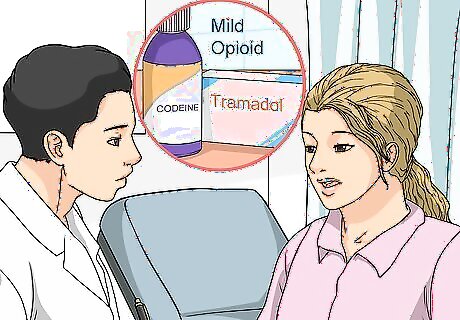
Try mild opioid therapies if your pain worsens or doesn't go away after 5 weeks. If you have mild to moderate bone pain that doesn't respond to OTC pain medications, ask your doctor if they recommend mild opioids, such as codeine or tramadol. Since opioids carry serious risks, such as addiction, your doctor may suggest that you hold off. Your doctor may prescribe a low-dose mild opioid along with OTC NSAIDs to manage your bone pain.
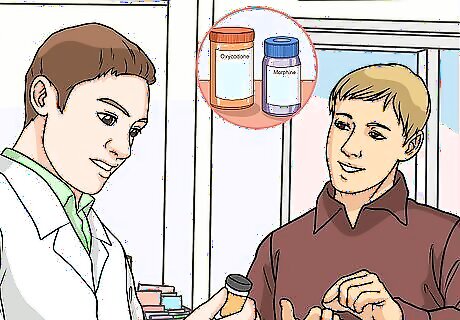
Begin strong opioid therapy only under your doctor's direction. For severe bone pain that doesn't go away with other medication, your doctor may give you strong opioids, such as oxycodone or morphine. Depending on the type of medication, you may take it orally, get it through a patch you wear on your skin, or get it intravenously at the hospital.Tip: If you have a care team or more than 1 doctor, it's important that only 1 doctor prescribes your pain medications. This reduces the risk of accidental overdose or side effects.
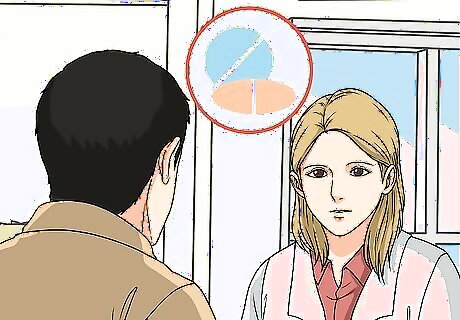
Ask your doctor if you should take adjuvant medications. If your bone pain is chronic, you may be prescribed adjuvant medication, which works with your other pain meds so they're more effective. Although adjuvant medications don't provide the actual pain relief, they enhance pain medications. For example, you might take corticosteroids or muscle relaxants along with OTC NSAIDs to get bone pain relief.
Trying Natural or Home Remedies
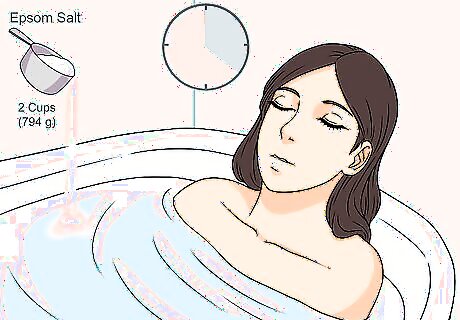
Soak in an Epsom salt bath for 20 minutes. Dissolve about 2 cups (794 g) of Epsom salt in a tub of warm or hot water. Get in the bath and soak for at least 20 minutes so your body absorbs the magnesium sulfate in the Epsom salt. This reduces inflammation and can reduce pain. If you're experiencing bone pain in your hands and don't want to run a bath, you could dissolve just a few spoonfuls of Epsom salt in a bowl of warm water. Then, soak just your hands in the water for 20 minutes.
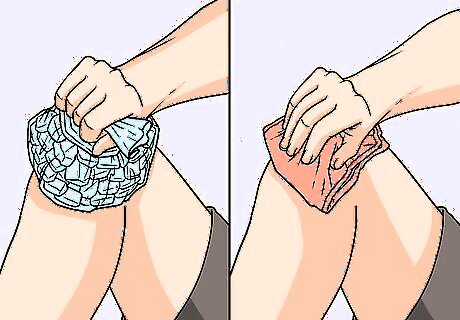
Apply a hot or cold pack to the aching area. Place a cold or ice pack over bones that feel inflamed. Hold the pack in place for about 10 minutes to numb the area. If you're experiencing deep muscle ache or spasms, use a hot pack or compress instead. You can also try alternating hot and cold packs to get pain relief. To make an ice pack, fill a sealable bag with ice and wrap it in a clean cloth. For a hot compress, soak a clean cloth in hot water and wring it out.
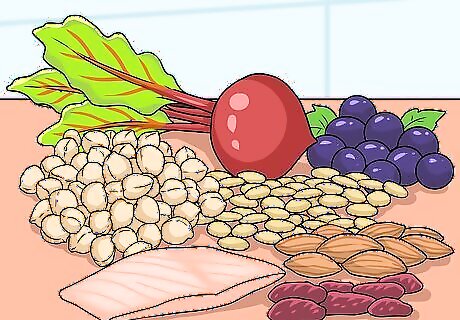
Add anti-inflammatory foods to your diet to relieve inflammation and joint pain. To reduce inflammation, eat omega-3 fatty acid-rich foods and avoid fried or processed foods, refined carbohydrates, or foods that are high in sugar. To get antioxidants and omega-3 fatty acids, eat:Tip: If you'd like to round out your diet with a daily supplement that supports your bones, take a supplement that includes vitamin D, calcium, glucosamine, and magnesium. Nuts and legumes, such as walnuts, lentils, chia seeds, beans Fatty fish, such as salmon, mackerel, and tuna Green tea Vegetables, such as leafy greens, avocados, and beets Fruits, such as berries, apricots, and prunes
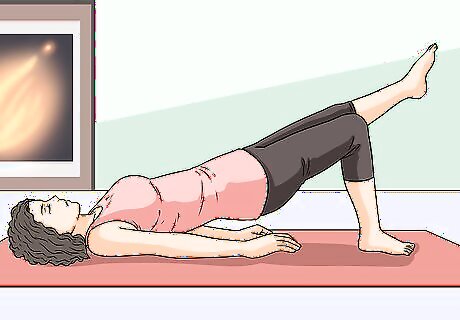
Exercise regularly throughout the week. Exercise can actually strengthen your bones and help the joints remain flexible, which reduces pain. Find exercises that are safe for you to do and that you enjoy. For example, yoga and pilates are gentle exercises that have been shown to reduce chronic pain in the spine. Stretching, qi gong, walking, and swimming are also good exercises to start with. If the pain worsens while you're exercising, stop and take a break. You might need to try a different exercise or give your muscles a rest.
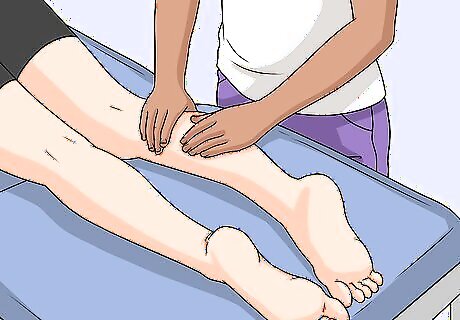
Try massage to reduce bone pain naturally. If you'd like a relaxing way to manage your bone pain, get a massage. Massage has been shown to reduce bone pain and it can make you feel relaxed for up to 18 hours after the treatment. It may also improve your sleep. Although more research is needed, you could try acupressure or acupuncture to manage your bone pain.




















Comments
0 comment